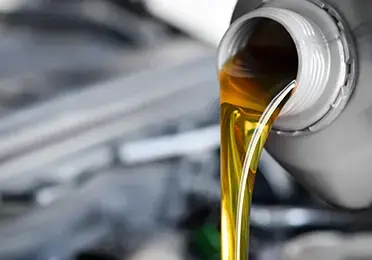All about Engine Oil
Published Date - 9th Jan 2020

For a healthier and longer engine life, you need to fuel it with the right engine oil. Engine oils are crucial in the smooth running of engines, reducing fuel emissions and improving engine’s performance.
What is an engine oil used for?
There are innumerable roles engine oils play to ensure your engine performs well. Here are few of the major ones:
1) Better Lubrication
Engines are exposed to different temperatures that result in gradual wear and tear. The primary role of engine oils is to ensure engines are lubricated properly, so that they run smoothly, and have a longer lifespan.
2) Cleaner Engine
Cleaning is an important role that an engine oil plays for your engine. It clears the accumulated deposits, sludge and microscopic debris from the engine and in turn unclogs it, so that the engine oil can flow well.
3) Effective Cooling
With regular use of your vehicle, exposure to high temperatures and the friction of the mechanical parts, your engine tends to heat up. The lubrication provided by engine oils helps to cool your engine circuit.
4) Protects it from Corrosion
Fuel combustion causes metal parts to oxidise and rust with time. The additives in engine oils help to slow down the process of corrosion, thereby giving your engine a longer lifespan.
5) Act as a Seal
Engine oils provide space between the piston and cylinder. These gaps are filled by the engine oils to optimise engine performance and efficiency.
What are the benefits of an engine oil?
For vehicle owners, engine oils help reduce costly repairs. Without an engine oil, the engine will quickly be damaged.
1) Longer Engine Lifespan
Since, engine oils clean, cool and prevent the engine from corrosion, they save it from being clogged and damaged. Mechanical parts last longer and corrode less due to that and in turn engines have a longer and healthier lifespan.
2) Smooth Running of Engine
When engines are oiled well, they perform better. Hence, regular oil changes are advised to enjoy the best of your engine.
3) Decreases Fuel Consumption and CO2 Emissions
If an engine is overused or its level is too low, the friction caused between metal parts affects the engine’s efficiency and increases the fuel consumption. When you use a good engine oil, reduction of pollution and fuel consumption is achieved.
Finding the right engine oil for a vehicle is a vital step to get the benefits of an engine oil. Go through your owner’s manual, take advice from a professional or the automotive manufacturer to be informed about the same.
For an engine oil to truly serve all its purposes, the level must be checked regularly in order to change the oil at the right time. Overused oil doesn’t play its role effectively, which is harmful for the general condition of the engine and its parts.







